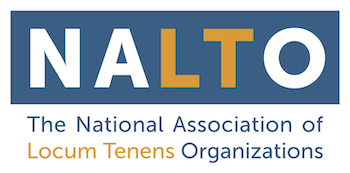President Obama signed the Medicare Access and CHIP Reauthorization Act, or MACRA, into law in April, 2015. MACRA replaces the SGR (sustained growth rate) formula that regulates payments to healthcare professionals that treat patients covered by Medicare. The law reforms the reimbursement process for healthcare providers and addresses several other issues as well.
The MACRA reimbursement framework includes technical assistance for providers, data sharing, and a federal advisory group, among other measures. The system ensures quality care by basing payments on the value and effectiveness of care. Healthcare providers that meet the highest standards are rewarded for their efforts on behalf of patients.
In other words, lawmakers designed MACRA for accountability at every turn. Healthcare providers are responsible, and incentivized, for delivering the best possible care to patients. Reforms also strive to ensure that providers working with Medicare and other federally funded programs are able to receive the reimbursements they deserve.
As a healthcare provider, it is imperative to learn the ins and out of MACRA in order to comply with standards and ensure maximum reimbursement. This could involve upgrading infrastructure, working with medical staffing agencies to hire the best healthcare professionals, or hiring a medical billing and coding firm that is familiar with MACRA.
At the very least, you need to learn all you can about MACRA so that you have the best opportunity to adopt new rules and regulations. Doing so will help you successfully run your practice and realize greater reimbursements. Here are just a few tips for getting on board with MACRA.
Upgrade to EMR
If you have yet to upgrade to a digital system of electronic medical records (EMRs), you are already behind the curve. This system is an essential element in tracking and reporting for reimbursement purposes.
The good news is that there are several choices for software and services now available to healthcare professionals. Options fit every budget and some of them are even free. There's no longer an excuse to avoid upgrading to an EMR system. You can even tap into the locum tenens network to find healthcare professionals familiar with the system you choose. Do you want to get paid? Then upgrade.
Learn the Basics
The text for this law comes in at nearly 1,000 pages. This makes it difficult for the average healthcare professional to read and understand it in its entirety. That said, there is no shortage of resources available to help you learn the basics of MACRA, from articles to seminars and webinars.
To start, there are a couple of different payment models to choose from. You'll need to select one of these options and learn the rules associated with to continue receiving reimbursement for your services.
Choosing a Payment Track
There are two options for reimbursement under MACRA: Merit-Based Incentives Payment System (MIPS) and Alternate Payment Models (APM). What are the differences and which system should you choose? Are you even eligible for both?
MIPS is a basic system for reimbursement and it measures four factors when determining reimbursement: quality, resource use, clinical practice improvement, and meaningful use of certified EHR (electronic health record) technology. These areas are measured through the following reporting initiatives: Physician Quality Reporting System (PQRS), Value-Based Payment Modifier (VBPM), Clinical Practice Improvement Activities (CPIA), and Meaningful Use (MU).
These reporting initiatives are compiled to create a score ranging from 0 to 100 to reflect the quality of care provided. This score indicates the associated level of reimbursement. Reporting is crucial to ensure payment under MACRA. A failure to properly and accurately report treatment and related activities will result in reduced payments, regardless of services provided.
As for APM, providers will have to comply with MIPS in most cases, as well as participate in other federal programs like Accountable Care Organizations (ACOs) and/or Patient-Centered Medical Homes (PCMH), for example. The upside of meeting all these qualifications is that providers who use APM may eventually receive higher annual premiums and annual bonuses.
Train Staff
Whether you use a healthcare staffing agency to find full-time workers or you have a revolving door of locum jobs to fill in, it's imperative that you train your staff to work with MACRA. These measures provide for the highest quality of care and reporting to ensure maximum reimbursement.
